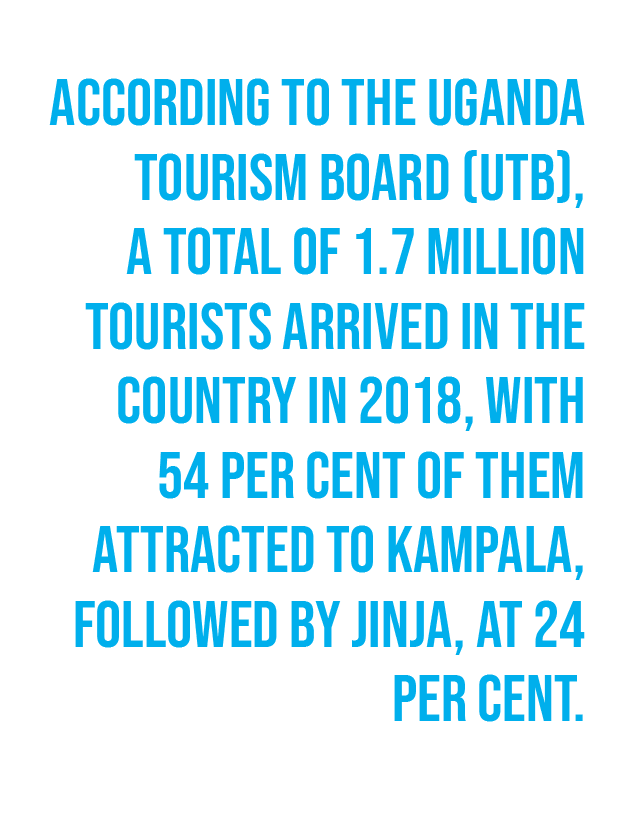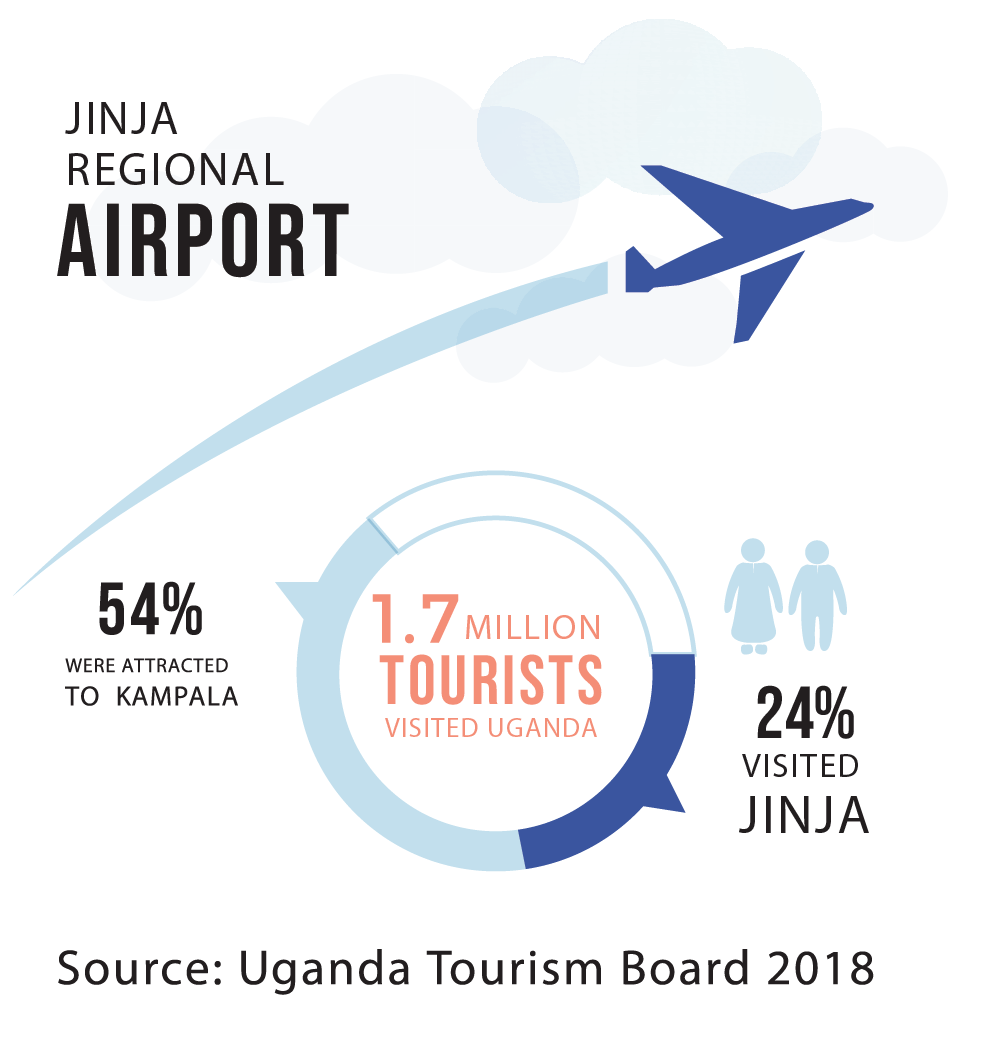Pillar 2
Tourism, Culture and Heritage
Policy Shift
Reprioritise the development of tourism training, marketing and physical infrastructure in the sub-region
Intervention 7: Elevating Jinja Airfield to a Regional Airport
Intervention 8: Reconstructing, Modernising and Establishing a Tourist and Culture Heritage Centre in Jinja
Intervention 9: Busoga Tourism and Investment Expo
Intervention 10: Developing the Sub-region’s Tourist Attractions
a) Declare and develop the Source of the Nile as a World Heritage Site
The Nile is an amazing natural endowment with unique features unlike any other water body in the world. From its source at Jinja, it is estimated to have a length of 4,132 miles (6,650 kilometres) to the Mediterranean Sea, making it the longest in the world. It draws its waters from over nine countries, including Uganda, Kenya, Rwanda, Democratic Republic of Congo, Tanzania, South Sudan, Ethiopia, Sudan and Burundi, into Egypt. It has three principal tributaries (streams), including the Blue Nile, the Atbara and the While Nile. The Nile River is historically, socially and economically significant to the world and Africa in particular; its basin covers one-tenth of the area of the continent, with an estimated 300 million people relying on its waters for a variety of activities. The Nile Valley, as it was known in ancient Africa, is a historical landmark that symbolises the evolution of civilisation. Economically, the river’s waters enable all-year-round cultivation and mobility across countries and continents.
The Busoga Consortium, together with the Central Government, will engage UNESCO to declare the Source of the Nile a World Heritage Site in light of its geographical uniqueness as the world’s longest river; its historical significance as the mother of ancient civilisation; and the magnitude of humanity that depends on it for a livelihood. Declaring the Source of the Nile a World Heritage Site will not only symbolise its significance but, most importantly, attract investment to harness its overwhelming potential as a tourist destination.
In addition, the Busoga Consortium will work closely with the Ministry of Tourism, Wildlife and Antiquities (MTWA) and UTB to develop the Source of the Nile into a modern tourist attraction built with relevant amenities such as restaurants, hotels etc.
b) Develop existing tourist attractions
In partnership with current undertakings such as the Busoga Tourism Initiative, the Busoga Consortium will establish and strengthen partnerships with Government and private sector players to popularise and develop existing tourist attractions such as the Kagulu Rock Climbing Challenge, and the Bishop Hannington Memorial Site in Kyando, Mayuge District. In addition, the potential for tourism on and around the water bodies will be explored and supported.


